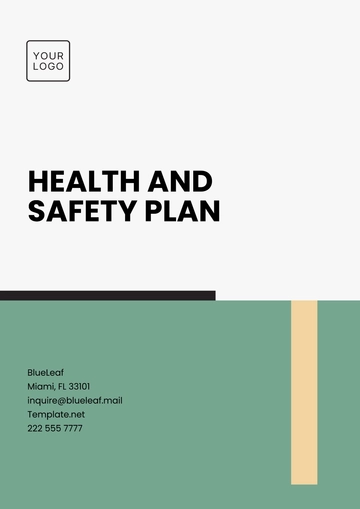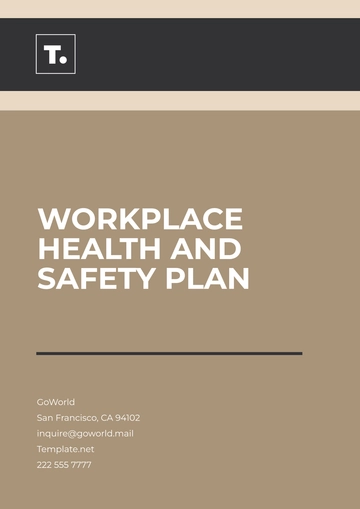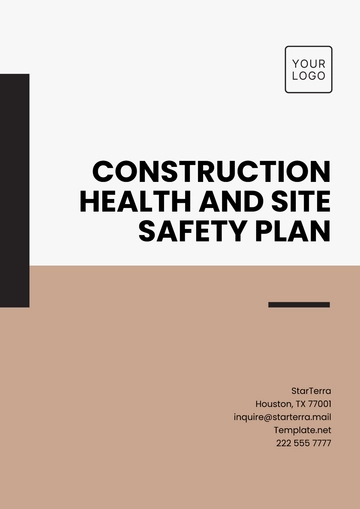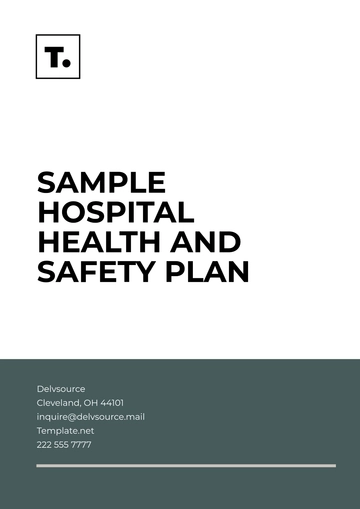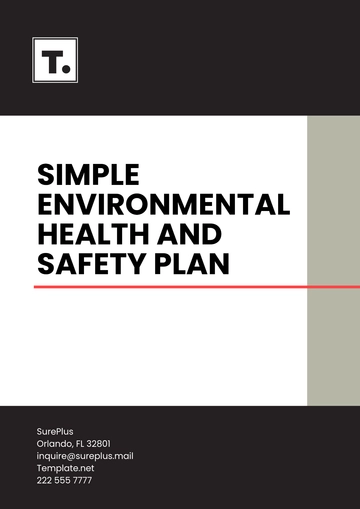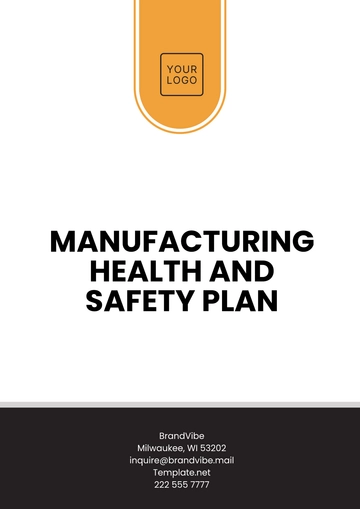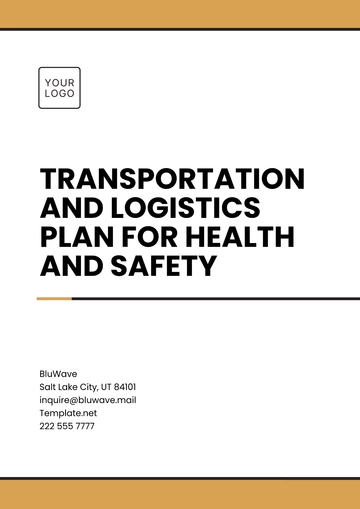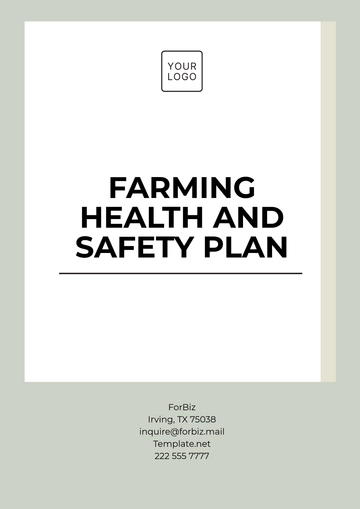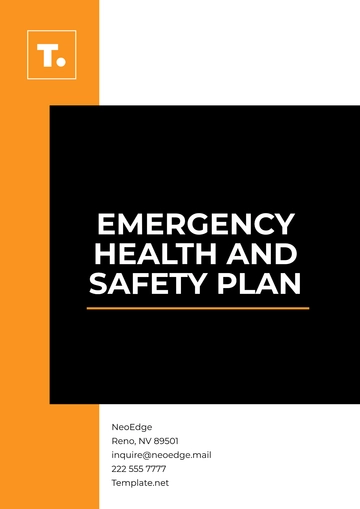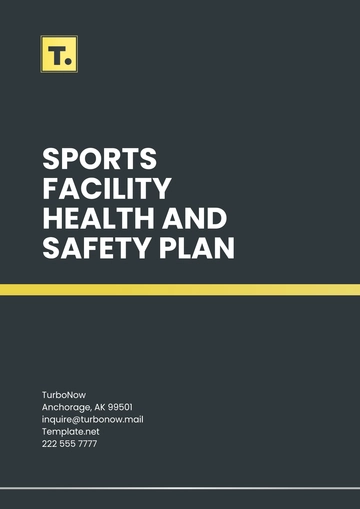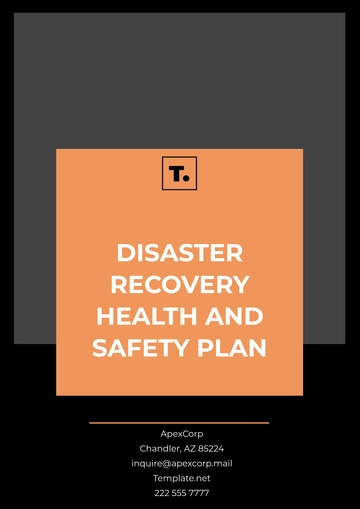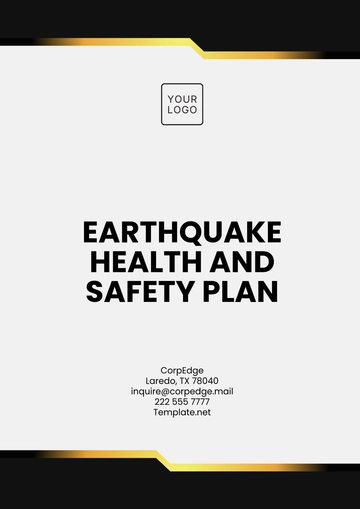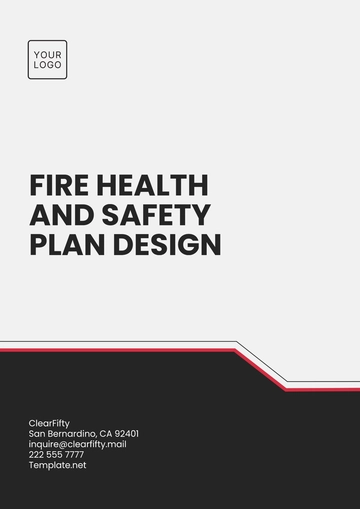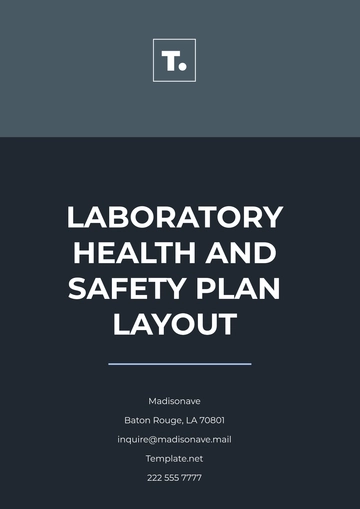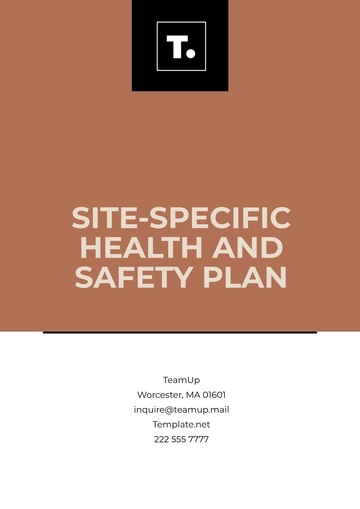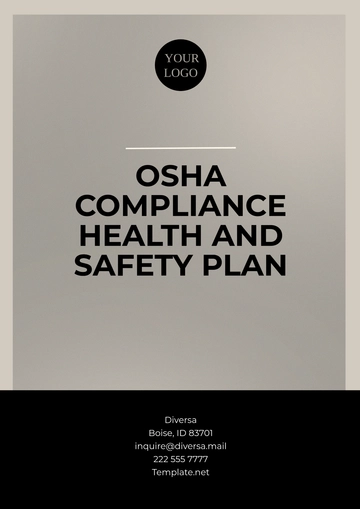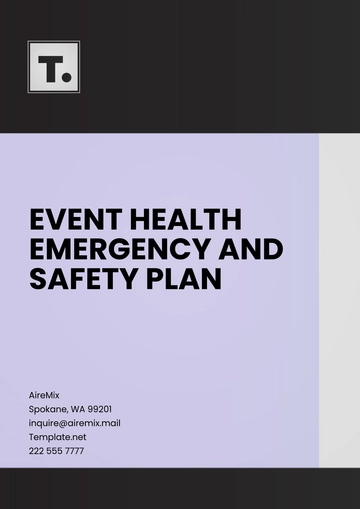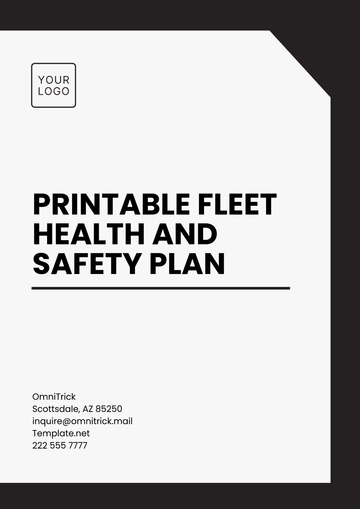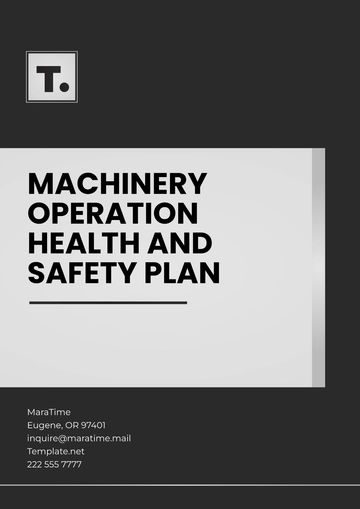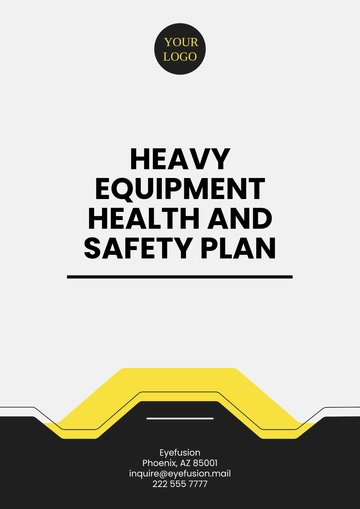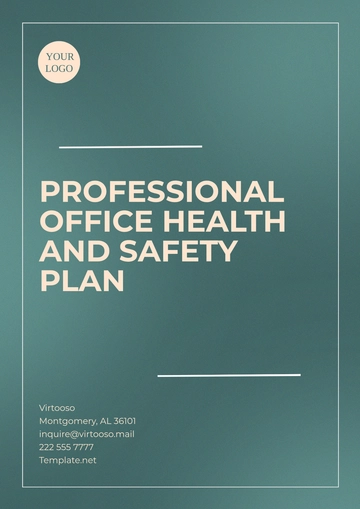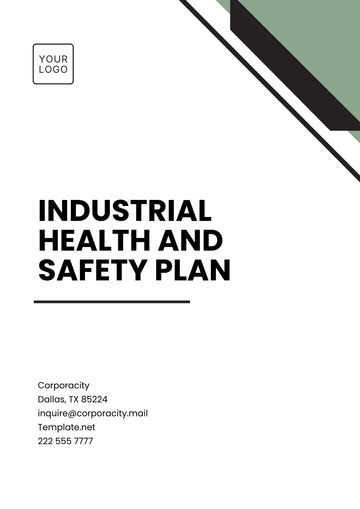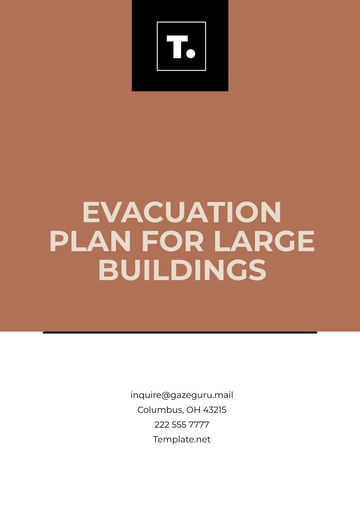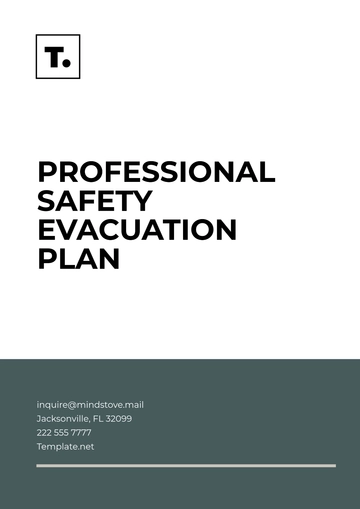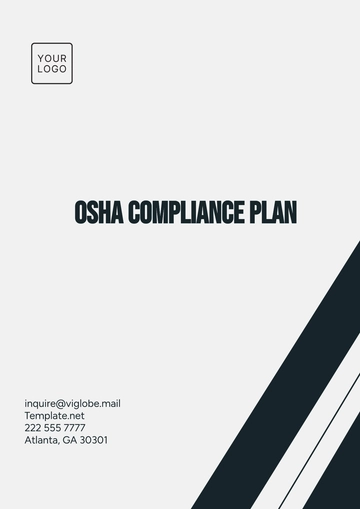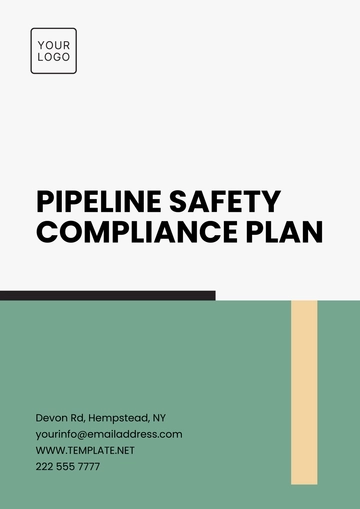Free Company Safety Plan
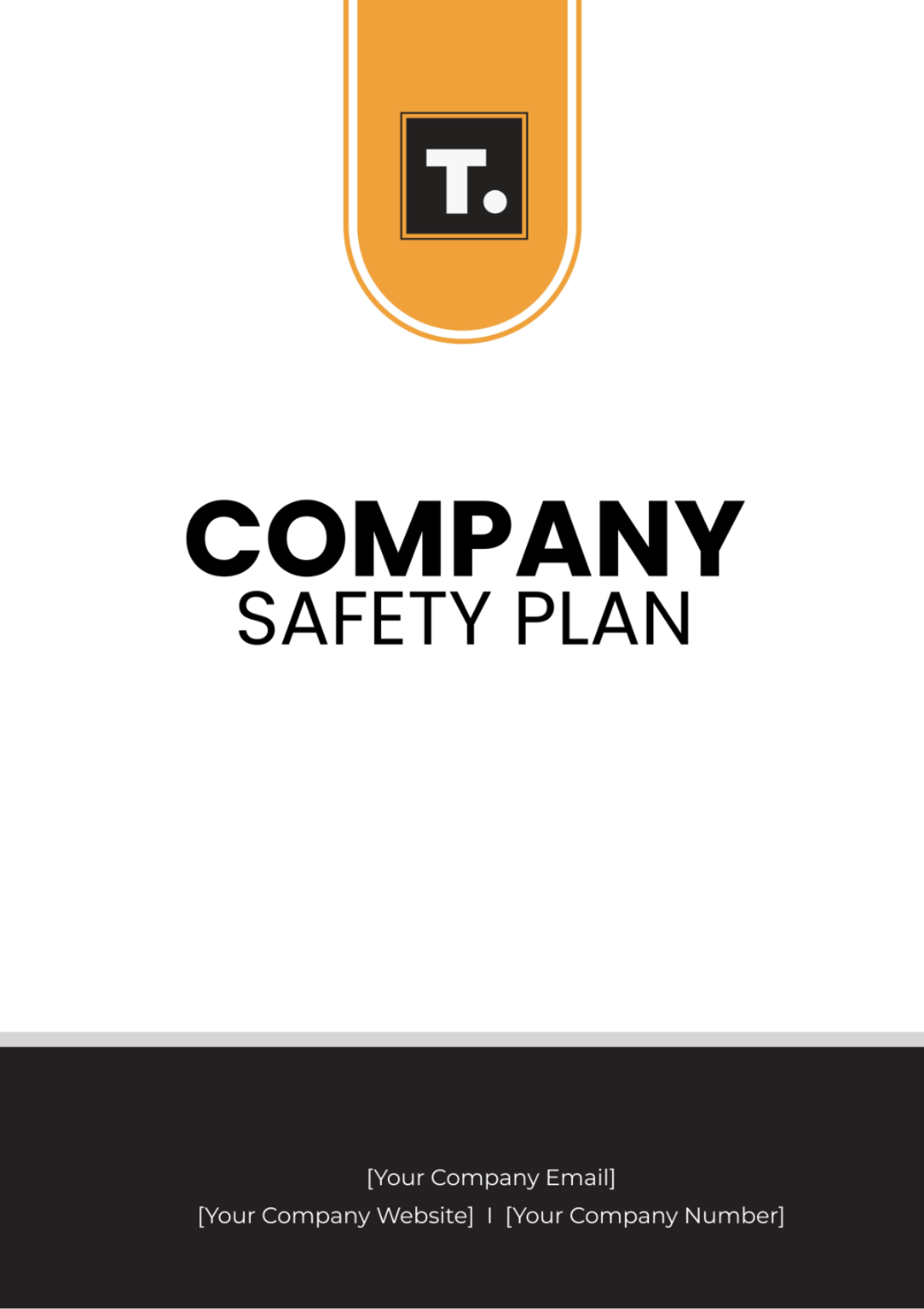
I. Introduction
1.1 Purpose of the Company Safety Plan
The purpose of this Company Safety Plan is to outline procedures and protocols to ensure the safety and well-being of employees within [Your Company Name]. This plan aims to create a safe working environment through comprehensive safety measures, regular training, and continuous improvement. By identifying potential hazards, establishing emergency protocols, and promoting a culture of safety, we strive to minimize risks and prevent accidents.
1.2 Scope
This safety plan applies to all employees, contractors, and visitors at [Your Company Name] facilities. It covers general safety guidelines, emergency procedures, and specific protocols for different departments. The scope also includes compliance with local, state, and federal safety regulations, ensuring that our practices meet or exceed legal requirements. This comprehensive approach ensures that safety is integrated into every aspect of our operations.
II. Contact Information
2.1 Emergency Contacts
It's important to have essential contact information readily available in case of emergencies. Keep this list accessible and updated.
Contact Type | Name | Phone Number |
|---|---|---|
Emergency Services | [EMERGENCY SERVICES] | [EMERGENCY SERVICES NUMBER] |
Company Emergency Line | [ COMPANY EMERGENCY LINE NAME] | [Your Company Number] |
Safety Officer | [SAFETY OFFICER NAME] | [SAFETY OFFICER PHONE NUMBER] |
Regularly review and verify the contact details to ensure they are current. Encourage employees to save these contacts in their phones and familiarize themselves with whom to contact in different emergency scenarios.
III. Safety Procedures
3.1 General Safety Guidelines
Familiarize Yourself with Emergency Exits: Know the locations of all emergency exits and evacuation routes in your work area.
Report Unsafe Conditions: Immediately report any unsafe conditions or behaviors to the Safety Officer or a supervisor.
Follow Safety Signs and Guidelines: Adhere to all posted safety signs and company safety guidelines. These are in place to protect you and your coworkers.
Maintain Clean Work Areas: Keep your work area clean and free of hazards to prevent accidents.
Use Equipment Properly: Only use equipment and tools that you are trained to use. Follow the manufacturer’s instructions and company protocols.
3.2 Emergency Evacuation Plan
Stay Calm: Remain calm and do not panic upon hearing the evacuation alarm.
Proceed to Nearest Exit: Leave your belongings behind and proceed to the nearest exit in an orderly fashion.
Do Not Use Elevators: Always use the stairs, as elevators may not be safe during emergencies.
Gather at Designated Assembly Point: Once outside, gather at the designated assembly point: [Designated Assembly Point].
Wait for Clearance: Do not re-enter the building until emergency personnel give the all-clear signal.
These procedures should be reviewed regularly and practiced through evacuation drills to ensure everyone is familiar with the steps.
IV. Safety Equipment
4.1 Personal Protective Equipment (PPE)
Requirement to Wear PPE: PPE must be worn at all times in designated areas.
Types of PPE: Includes hard hats, safety goggles, gloves, ear protection, and steel-toed boots.
Inspection of PPE: Inspect your PPE before each use. Report any damages or deficiencies to your supervisor.
Proper Use of PPE: Ensure PPE fits correctly and is worn properly for maximum protection.
4.2 Safety Equipment Maintenance
Regular Checks: Conduct regular checks and maintenance of all safety equipment, including fire extinguishers, alarms, and emergency lighting.
Report Issues: Report any malfunctioning or damaged equipment to the Safety Officer immediately.
Maintenance Records: Keep detailed maintenance records to track the condition and servicing of all safety equipment.
Proper use and maintenance of safety equipment are crucial for effective protection and emergency response.
V. Regular Review and Updates
5.1 Review Schedule
Our Safety Plan will be reviewed and updated regularly to ensure it remains effective and relevant. All employees are encouraged to provide feedback and suggestions for improvements.
Review Period | Next Review Date |
|---|---|
Every six months | [Next Review Date] |
Regular reviews help to identify new hazards, update procedures, and incorporate feedback from employees to continually improve our safety practices.
VI. Empowerment and Encouragement
6.1 Employee Responsibility
At [Your Company Name], we believe that safety is a collective responsibility. We empower our employees to take ownership of their safety and the safety of others. Employees are encouraged to:
Report Hazards: Promptly report any hazards or unsafe conditions.
Participate in Training: Attend all required safety training sessions.
Follow Procedures: Adhere to all safety procedures and protocols.
Provide Feedback: Offer suggestions for improving workplace safety.
6.2 Management Commitment
Management is committed to providing the necessary resources, training, and support to ensure a safe working environment. This includes:
Investing in Safety Equipment: Regularly updating and maintaining safety equipment.
Conducting Safety Audits: Performing regular safety audits and inspections.
Encouraging Open Communication: Promoting a culture of open communication about safety concerns and improvements.
VII. Additional Resources
7.1 Company Resources
For more information, please visit our website or follow us on our social media channels:
Website: [Your Company Website]
Social Media: [Your Company Social Media]
7.2 External Resources
Additional safety resources are available through government and industry organizations:
OSHA: Occupational Safety and Health Administration (www.osha.gov)
NIOSH: National Institute for Occupational Safety and Health
Local Emergency Services: Contact local fire, police, and medical services for specific guidelines and support.
- 100% Customizable, free editor
- Access 1 Million+ Templates, photo’s & graphics
- Download or share as a template
- Click and replace photos, graphics, text, backgrounds
- Resize, crop, AI write & more
- Access advanced editor
Create a safer work environment with Template.net’s Company Safety Plan Template. This editable and customizable template is designed to meet your specific needs. Easily editable in our AI Tool, it ensures thorough safety measures for your company.
You may also like
- Finance Plan
- Construction Plan
- Sales Plan
- Development Plan
- Career Plan
- Budget Plan
- HR Plan
- Education Plan
- Transition Plan
- Work Plan
- Training Plan
- Communication Plan
- Operation Plan
- Health And Safety Plan
- Strategy Plan
- Professional Development Plan
- Advertising Plan
- Risk Management Plan
- Restaurant Plan
- School Plan
- Nursing Home Patient Care Plan
- Nursing Care Plan
- Plan Event
- Startup Plan
- Social Media Plan
- Staffing Plan
- Annual Plan
- Content Plan
- Payment Plan
- Implementation Plan
- Hotel Plan
- Workout Plan
- Accounting Plan
- Campaign Plan
- Essay Plan
- 30 60 90 Day Plan
- Research Plan
- Recruitment Plan
- 90 Day Plan
- Quarterly Plan
- Emergency Plan
- 5 Year Plan
- Gym Plan
- Personal Plan
- IT and Software Plan
- Treatment Plan
- Real Estate Plan
- Law Firm Plan
- Healthcare Plan
- Improvement Plan
- Media Plan
- 5 Year Business Plan
- Learning Plan
- Marketing Campaign Plan
- Travel Agency Plan
- Cleaning Services Plan
- Interior Design Plan
- Performance Plan
- PR Plan
- Birth Plan
- Life Plan
- SEO Plan
- Disaster Recovery Plan
- Continuity Plan
- Launch Plan
- Legal Plan
- Behavior Plan
- Performance Improvement Plan
- Salon Plan
- Security Plan
- Security Management Plan
- Employee Development Plan
- Quality Plan
- Service Improvement Plan
- Growth Plan
- Incident Response Plan
- Basketball Plan
- Emergency Action Plan
- Product Launch Plan
- Spa Plan
- Employee Training Plan
- Data Analysis Plan
- Employee Action Plan
- Territory Plan
- Audit Plan
- Classroom Plan
- Activity Plan
- Parenting Plan
- Care Plan
- Project Execution Plan
- Exercise Plan
- Internship Plan
- Software Development Plan
- Continuous Improvement Plan
- Leave Plan
- 90 Day Sales Plan
- Advertising Agency Plan
- Employee Transition Plan
- Smart Action Plan
- Workplace Safety Plan
- Behavior Change Plan
- Contingency Plan
- Continuity of Operations Plan
- Health Plan
- Quality Control Plan
- Self Plan
- Sports Development Plan
- Change Management Plan
- Ecommerce Plan
- Personal Financial Plan
- Process Improvement Plan
- 30-60-90 Day Sales Plan
- Crisis Management Plan
- Engagement Plan
- Execution Plan
- Pandemic Plan
- Quality Assurance Plan
- Service Continuity Plan
- Agile Project Plan
- Fundraising Plan
- Job Transition Plan
- Asset Maintenance Plan
- Maintenance Plan
- Software Test Plan
- Staff Training and Development Plan
- 3 Year Plan
- Brand Activation Plan
- Release Plan
- Resource Plan
- Risk Mitigation Plan
- Teacher Plan
- 30 60 90 Day Plan for New Manager
- Food Safety Plan
- Food Truck Plan
- Hiring Plan
- Quality Management Plan
- Wellness Plan
- Behavior Intervention Plan
- Bonus Plan
- Investment Plan
- Maternity Leave Plan
- Pandemic Response Plan
- Succession Planning
- Coaching Plan
- Configuration Management Plan
- Remote Work Plan
- Self Care Plan
- Teaching Plan
- 100-Day Plan
- HACCP Plan
- Student Plan
- Sustainability Plan
- 30 60 90 Day Plan for Interview
- Access Plan
- Site Specific Safety Plan
